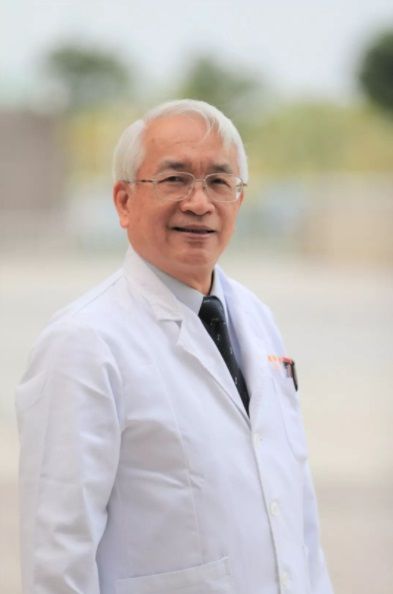
2021年1月10日我與摯友 許弘昌教授創立了台灣電腦輔助骨科手術學會。端賴各位理監事及國內頂尖臨床醫師及專家學者教授的努力,學會已相當成長。由於現代科技的進步,各行各業,電腦輔助、機器手臂、人工智慧、大數據…等均是突飛猛進,時至今日,電腦輔助骨科手術(CAOS)的領域,除了導航、機器手臂、3D列印外亦包括了虛擬實境Virtual Reality(VR)、擴增實境Augmented Reality(AR)及人工智慧Artificial Intelligence(AI)的技術,使得手術的教育訓練能提高,術中的輻射劑量降低,並藉由術中的各種大數據的參數做有效的分析,得出術後最佳臨床療效的數值,來提供往後治療最佳化的參考。應用細胞治療等創新科技加上輔助手術以提高療效,遠距術後復健,甚至設計新儀器以減少術者身心負擔,以延長醫者服務生涯。如果要能將此技術推廣,我們必須結合骨科醫師、醫學工程師、基礎醫學研究者及製造商、法律及市場分析專家,藉由學會的各項活動,分享經驗精進技術,達到醫學及社會教育,產官學法合作的目標,最終使得骨科醫療品質更提昇,病人滿意度更高。本學會成員及理監事均是國內骨科各手術領域及醫學工程領域的頂尖臨床醫師與專家學者教授,必可帶動此新領域之風潮向國際邁進!希望藉由大家一起努力,能使本學會永續經營、蒸蒸日上,把所有的成果運用到病人的診斷及治療上並減少骨科醫師的身心負擔,造福更多的病人及醫療人員。
Welcome Address CAOS-Taiwan:
Our society, Taiwan society for computer assisted orthopedic surgery CAOS-Taiwan was founded on January 10, 2021, which is a non-profit organization based on the important concept of “Specialist Collaboration”, by orthopedic surgeons, engineers and manufacturers. A close interaction among scientists, clinicians and industry is essential! By our devoted contributions and enthusiastic activities in the areas of research and clinical study, hopefully a better orthopedic health well-being is coming soon! The detailed information of our society is provided on our website, ttp://www.caostaiwan.org.tw/.
Nowadays CAOS includes not only all kinds of computerized tools, devices and instrumentations, such as Computerized medical imaging technology, Navigation, Robotics, Patient specific instrumentation (PSI), Virtual reality (VR), Augmented reality (AR), Artificial intelligence (AI), Computer aided diagnosis (detection & new classification), and Computer assisted optimization therapy, but also tele-rehabilitation and new instrumentations to lower the physical and spiritual burdens of the health care providers.
Basically there are 3 basic elements of CAOS systems: 1. Therapeutic object (TO)/Surgical object (SO), which is the target of the treatment, 2. Virtual object (VO), which is the virtual representation, 3. Navigator (NAV) and/or End effector (EE) that links both objects. AR enhances the perception of reality by “layering a digital object on top of reality”. This means AR has been described as “the concept of digitally superimposing virtual objects (VO) onto physical objects (PO) in real space so individuals can interact with both at the same time”. AR has the potential to be a timesaving, risk and radiation reducing, and accuracy enhancing technology in orthopedic surgery. Application of AI for orthopedics can help screen radiographs for subtle abnormalities, detect uncertain diagnosis, develop more detailed new classification and find the usefulness of treatment strategy, develop big data and come into optimization.
According to BCC Research, the global market of medical robotics and computer-assisted surgery should grow from $6.1 billion in 2020 to $11.6 billion by 2025 with a compound annual growth rate (CAGR) of 13.5%. According to Grand View Research, AI market size was valued at USD 93.5 billion in 2021 and is projected to expand at a CAGR of 38.1% from 2022 to 2030. However, CAOS is still at the stage of “measuring data” (crude information) without really knowing what the best use of these data is. Today robotic technology is just performing our current knowledge of conventional surgery. For instance, there are still controversies on what defines the best indications for UKA or what is the best alignment for TKA. A new generation of robotic-assisted surgical tools will be able to use complex data to execute better planning. For example, implant design and CAOS systems have not been co-developed, losing the potential for smaller, bone-sparing prostheses.
In the near future, new generations of mobile, inherently registered, imaging systems will be developed, and research should particularly be focused on alternative tracking technologies, which remove drawbacks of the currently available optical tracking and magnetic devices. Updated technology will stimulate the development of less or even non-invasive registration methods and referencing tools and force sensing devices and real-time computational models may allow to go beyond pure kinematic control of the surgical actions. So called “Hybrid” navigation Interface is on the way. The integration of a standard slice-based navigation interface into an augmented reality visualization overcomes the shortcomings of both systems. Besides, incorporating new components such as cells and genetic therapies and orthopaedic surgeon friendly tools into the modern CAOS technology will further promote the treatment effects.
In summary, we are looking forward to a smaller, quicker, and cheaper device, which providing real time tension evaluation (orthosensor), and go beyond imaging to appreciate the kinematics of the operative joint. 3D static and dynamic recording the individual person at the age of bone maturity might be helpful. Using implant monitoring & outcome app postoperatively is highly expected. Further high-quality studies with longer term F/U on functional outcomes, implant survivorship, complication and cost-effectiveness are awaited.